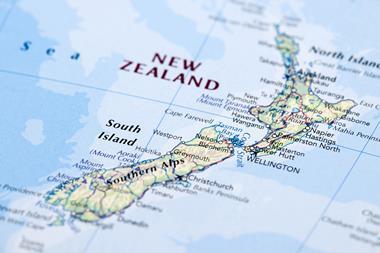Aon still has its work cut out for it if it wants to complete its purchase of Willis Towers Watson and mitigate market competition worries – however, will competition concerns increase across the piece as a result of the recent consolidation uptick?
By Editor Katie Scott

Aon first announced its $30bn takeover of rival broker Willis Towers Watson (WTW) pre-pandemic, back in early March 2020.
Although acquisitions don’t happen overnight, I imagine Aon has been pulling its hair out with the tedious administrative lengths it has had to go through simply to get the deal approved by the various competition authorities working out of all the jurisdictions it operates in.
Due to the concerns raised by bodies such as the European Commission (EC), New Zealand’s Commerce Commission and the Competition and Consumer Commission of Singapore (CCCS), Aon has had to secure a hefty divestment deal with Gallagher to sell a number of WTW’s operations.
It does raise the question of whether, following the divestments, Aon will still benefit from all of the synergies it first envisioned when it initially agreed the transaction with WTW.
European retail broking businesses featuring in the divestment with Gallagher include certain operations in Germany, Netherlands, Spain and France, for example the vast majority of French insurance broker Gras Savoye. Specialty operations moving from WTW to Gallagher in the UK principally include cyber, space and aerospace products.
Although Aon and WTW initially anticipated that the acquisition would be all wrapped up by quarter one this year, the divestment with Gallagher is not expected to complete until the second half of 2021.
And, although the EC has this week given its approval of the deal – subject to the divestments – the Commerce Commission in New Zealand is still investigating its competition concerns and is not due to give its verdict until 20 August. The CCCS is equally still reviewing its reservations on the transaction following a public consultation earlier this year.
Plus, let’s not forget the US Department of Justice, which last month filed a civil antitrust lawsuit against the acquisition, alleging that “the merger threatens to eliminate competition, raise prices and reduce innovation for American businesses, employers and unions that rely on these important services”.

The complaint, which was filed in the US District Court for the District of Columbia, argued that the takeover would eliminate “important competition in five markets” by combining two of the ‘Big Three’ global insurance broking businesses.
In response, Aon and WTW said the lawsuit “reflects a lack of understanding of our business, the clients we serve and the marketplaces in which we operate”.
Needless to say, the acquisition has been more of an uphill battle than maybe Aon anticipated.
The Aon-WTW merger and its potential impact on competition in the broking market has been rumbling on in the background amid an absolute acceleration of broker consolidation that has taken place both last year and so far this year.
Industry commentators tell me that the broking mid-market is on the verge of disappearing, leaving just very small or very large brokers to cater to clients’ needs. The combined Aon-WTW entity clearly falls into the very large camp here.
Considering current market activity here, it does pose the question of whether competition authorities will have a busy time on their hands in the shorter-term until smaller businesses can grow and develop to replace some of that missing mid-market, or whether market competition will become an even bigger issue as consolidators scale up at pace and look to smaller acquisition targets.
It’s clear the shape of the broking market is undergoing transformation – let’s see how it develops post-pandemic.
Hosted by comedian and actor Tom Allen, 34 Gold, 23 Silver and 22 Bronze awards were handed out across an amazing 34 categories recognising brilliance and innovation right across the breadth of UK general insurance.




















































No comments yet